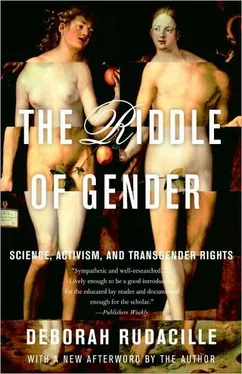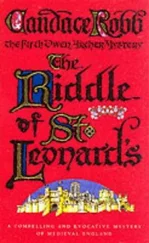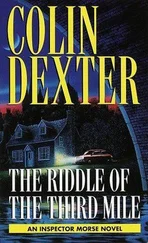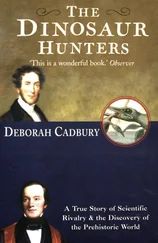Hirschfeld noted certain shared traits in the people he studied. First, and most important, their cross-dressing began at a very young age and was generally lifelong. “In most of the cases we can trace the urge back to their early childhood. It increases during puberty; the conviction becomes even clearer in their awareness at that time, and then remains almost unchanged for their entire life.” Second, he found that far from exhibiting symptoms of general pathology or derangement, most of the transvestites he knew appeared to be socially and economically successful people, whose only deviation from the norm lay in their persistent and often compulsive desire to cross-dress. “The transvestites that we have come to know here are intelligent, conscientious people who have diverse interests and a broad education,” he writes in Die Transvestiten. “In school, almost all of them excelled in motivation, diligence, and especially in their ease of understanding (which many psychiatrists today of course look upon as a slight stigma of degeneration). At present, all of them find themselves in good financial standing and in good jobs in which they have been promoted because of their great energy and proficiency.”
To understand the curious nature of that assertion, its generally positive and complimentary tone marred only by the reference to “degeneration,” one must know something about the context in which Hirschfeld was working. To the sexologists who came before him and even to his peers, all forms of sexual nonconformity, including homosexuality, were indications of disease. “The pre-sexological era of modern sex research was almost exclusively devoted to the study of people believed to be sick. The sexual manifestations of their sickness were carefully listed, and as a rule, described to degeneration,” wrote Erwin A. Haeberle, in The Birth of Sexology. The word “degeneracy” had a very specific meaning for Hirschfeld, his predecessors, and his contemporaries. Degeneracy implied weak or damaged genes, a hereditary defect that manifested in conditions as various as alcoholism, mental retardation, promiscuity, and sexual “disorders” such as homosexuality, transvestism, and fetishism. Today, the word “degeneracy” connotes a moral failing, but to Hirschfeld and his contemporaries it referred to an organic defect that should not be passed on to future generations. Like many physicians of the time, within Germany and without, Hirschfeld was a eugenicist, concerned not just with individual patients but also with the health of society as a whole. His belief in eugenics, and more specifically in biological explanations for human behavior, provided the impetus for his scientific investigations, his medical practice, and his social activism. Biology, in particular the new science of endocrinology, promised to explain everything for Hirschfeld and for his contemporaries, including the riddle of sexual intermediaries.
Hirschfeld defined four types of sexual intermediaries. First came people born with ambiguous genitalia, neither classically male nor classically female—the clinically intersexual. Next, people with cross-gendered secondary sexual characteristics, “men with womanly mammary tissue (gynecomastia) and women without such; women with manly hair, such as manly beard or manly pubes.” Into this group Hirschfeld classed men and women whose body morphology deviated from the norm. These were the unfortunate men and women who were more often mocked, harassed, and/or stopped by police when they were actually wearing the clothes of their biological sex, rather than when they were cross-dressed. One woman mentioned by Hirschfeld was actually stopped by police more than a dozen times when dressed as a woman. Dressed as a man, she encountered no problems at all.
Next came those “persons divergent with regard to their sex drive.” This category included not only homosexuals and bisexuals, but also masochistic men and those who preferred to adopt the “female” role in sex with women, and sadistic women and those who adopted the “male” role in sex with men. So, for example, men attracted to “energetic” women or to women “who are considerably more mature, intellectual and older than themselves” were believed by Hirschfeld to be expressing a kind of femininity that placed them in the same category as homosexuals. Similarly, “women betray their manly mixture in a preference for the womanly type of man, very dependent, very youthful, unusually gentle men, in general for such ones who in their traits of behavior and character correspond more to the feminine type.”
The final category of sexual intermediary included “men whose feminine emotions and feelings are reflected in their manner of love, their direction of taste, their gestures and manners, their sensitivity, and many times their particular way of writing. Also men who more or less dress themselves as women or live totally as such; on the other side women of manly character, manly ways of dressing and thinking and writing, strong tendency towards manly passions, manly dress, naturally also such women who more or less lead the life of men.” These were the people who would eventually be called “transsexual,” though there is some dispute about the origin of the term, which some attribute to Hirschfeld and others attribute to the physician David O. Cauldwell, whose perspective on these patients was considerably less positive.
Using the new science of endocrinology to support his theory of intermediaries, Hirschfeld found the work of the Viennese pathologist Eugen Steinach—who transplanted testicles and ovaries into neutered animals of both sexes—especially significant. Noting that that the sexual behavior of the experimental animal was profoundly affected by the type of gonad that Steinach implanted, Hirschfeld concluded that in addition to germ cells (sperm or eggs), testicles and ovaries produced secretions that masculinized or feminized experimental animals irrespective of their birth sex. Extrapolating from the animal data, Hirschfeld concluded that the various forms of gender variance (including homosexuality) were the result of endocrine anomalies. The production of sex hormones in testicles and ovaries would soon be confirmed by endocrinologists, but the second half of Hirschfeld’s hypothesis—that homosexuality and other forms of gender variance were the result of endocrine anomalies—has been vigorously contested ever since.
Hirschfeld’s theories and the work of his fellow endocrinologists and sexologists fascinated not only fellow physicians but also the general public. “Early in the twentieth century, endocrinology was the shit!” says historian Susan Stryker. “It explained everything. It had this radical view of the body: ‘no one is fully man, no one is fully woman.’ We’re all a mixture of different things, and certain tendencies predominate and that’s why homosexuality can be caused by a glandular imbalance. That whole model that people exist on a continuum was Hirschfeld’s idea. Among the educated, that was more the model for how things were, part of the destabilizing thrust of modernism—that endocrinological view of gender difference,” says Stryker.
In many ways, we are the heirs of that “destabilizing” world view that Hirschfeld and his colleagues sought to anchor in biology. While reading Hirschfeld, I realized with a shock that I would probably qualify as a low-grade intermediary under the Hirschfeld nosology (system of classification). Although I do not have a beard or a male body shape, nor do I desire to be a man, I do exhibit a mix of the natural psychological attributes of absolute “maleness” and “femaleness” identified by Hirschfeld. “Capable, active, enterprising, wandering,” in general, men are “active, aggressive, searching,” says Hirschfeld, and tend to lack the “grace, gentleness, charm and submissiveness of the woman.” “Womanly” women, by contrast, are “receptive, impressionable, sensitive, emotional and more direct than the man while less concerned with the strongly abstract, the racking of one’s brains, or even the purely creative and active side of the human psyche.” Reading this description, I thought back to my research trip to California at the start of this project, in which I drove alone from hilly San Francisco to the fertile midsection of the state to the desert outside Palm Springs and then back up the coast, to San Diego and Los Angeles via San Juan Capistrano. Along the way I interviewed sources whom I had met over the Internet and through my local contacts. The trip required both “masculine” independence and initiative to get me on the road and keep me there, but also “feminine” receptivity and sensitivity as I asked questions, listened, and empathized with the life stories of my sources. If I had been purely “masculine” or purely “feminine,” in the traditional sense, I could not have carried out this work successfully. I should add that I thoroughly enjoyed both aspects of the trip, although, when I returned home, I discovered that my sixteen-year-old daughter had wrecked my new car in my absence! My response to this debacle was both “masculine” and “feminine”—the empathizing female self was exclusively concerned with my daughter’s well-being (thankfully she was fine), while the analytical male self grimly calculated the inconvenience and the expense. Like most “mixed” beings these days, I don’t perceive these aspects of my personality as at war with each other, however, nor do I consider myself transgendered. The definition of “femininity” has, over the past hundred years, expanded to include many qualities once coded “masculine,” and vice versa.
Читать дальше












